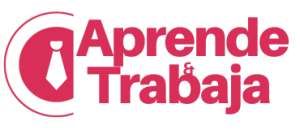Student Loans Collections Resume: What Borrowers Must Know Now
Student loan collections resume after a long pause—understand what this means for borrowers, and how to manage payments or avoid default.
Student loan collections are back. Here’s what you need to do.
After a historic freeze that offered temporary relief to millions of federal student loan borrowers, collections on defaulted student loans have officially resumed.
For many, this signals a return to monthly payments, renewed contact from debt collection agencies, and the looming threat of wage garnishment or tax refund withholding.
Understanding how this transition affects your financial responsibilities is crucial—especially if your loans were already in default before the payment pause.
Now more than ever, borrowers must take proactive steps to avoid further penalties and regain control of their financial future.

What Does the Resumption of Student Loan Collections Mean?
The return of student loan collections marks the end of a federal suspension enacted during the COVID-19 pandemic.
This temporary halt, which began in March 2020, paused all collections activity on defaulted federal student loans, including wage garnishments, tax refund seizures, and collection calls. It also stopped interest accumulation on these loans.
As of now, this pause has expired. Collections are once again active, and borrowers with loans in default may begin seeing enforcement measures if no action is taken.
The Department of Education and contracted collection agencies are reaching out to borrowers, signaling a renewed push to collect past-due balances.
Who Is Affected by the Restart?
Not every borrower is immediately impacted. The resumed collections apply specifically to borrowers with federal loans in default before the COVID-19 pause.
If your loans were current or in deferment or forbearance during the freeze, you may simply resume normal payments without the threat of collections.
However, if your loan was already in default prior to March 2020, you are now at risk of collection activity, including:
- Garnishment of wages without a court order
- Seizure of federal tax refunds or Social Security benefits
- Contact from debt collection agencies or legal representatives
- Additional fees and penalties added to your balance
Private student loans, while not subject to the federal pause, have continued to pursue collection throughout the pandemic.
The restart primarily impacts federal borrowers, especially those in default under the Federal Family Education Loan (FFEL) Program and Direct Loan Program.
Fresh Start: A Temporary Lifeline
The Department of Education has launched an initiative called Fresh Start, designed to help defaulted borrowers regain good standing.
This one-time program allows eligible borrowers to return their loans to “current” status, removing the default from their credit report and halting collection efforts.
To benefit from Fresh Start, borrowers must:
- Opt in by contacting their loan servicer or logging into their account at myeddebt.ed.gov
- Agree to resume payments under a new repayment plan, such as an income-driven repayment (IDR) plan
- Provide updated contact and employment information
Fresh Start offers a critical opportunity to avoid garnishment and other aggressive collection actions—but the program is temporary and only available for a limited time.
Your Rights During Collections
Even when collections resume, borrowers maintain certain rights. Federal law requires that collectors:
- Notify you before garnishing wages
- Offer rehabilitation or consolidation options
- Provide written communication and validation of debt
- Respect limits on how and when they can contact you
If you believe your rights are being violated, you can file a complaint with the Consumer Financial Protection Bureau (CFPB) or contact the Federal Student Aid Ombudsman.
Understanding your rights ensures that you can respond confidently and protect yourself from abuse or misinformation.
How to Avoid or Resolve Default
The best way to manage default is to prevent it. If you’re behind on payments or worried about resuming them, consider:
- Applying for an income-driven repayment plan that reduces your monthly amount
- Requesting forbearance or deferment if facing temporary hardship
- Exploring loan consolidation to combine and reset defaulted loans
- Utilizing Fresh Start to reestablish good standing
For those already in default, rehabilitation is another option. This requires making nine consecutive, affordable payments agreed upon with your loan holder. Once complete, the default is removed from your record.
Conclusion
The resumption of student loan collections is not just a policy shift—it’s a call to action. Defaulted borrowers must respond swiftly to avoid renewed financial pressure.
Take advantage of relief options like Fresh Start, protect your rights, and create a repayment strategy that fits your reality. With the right steps now, you can prevent long-term damage and take control of your debt.





